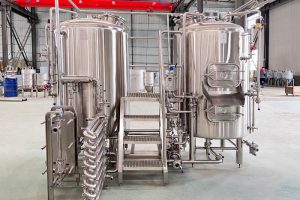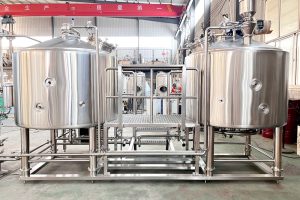
industrial beer brewing equipment
Overview of Industrial Beer Brewing Systems Industrial beer brewing equipment refers to the large-scale systems and machinery used by commercial breweries to produce beer on a mass production scale. Compared to homebrewing setups, these systems allow for much higher batch sizes, automation, and continuous processing. Some key components of an industrial brewing system include: In

What equipment is needed for quality control and laboratory testing in breweries?
Quality control and lab testing are paramount in the brewing industry to ensure that every batch of beer meets the high standards expected by consumers. A critical aspect of maintaining quality is having the right equipment for accurate analysis and monitoring throughout the brewing process. In this article, we will delve into the essential equipment needed for quality control and lab testing in a brewery.

Applications and Uses of Quality Brewing Equipment
Overview of Quality Brewing Equipment Brewing beer requires a complex set of equipment to properly conduct each step of the brewing process. From milling to mashing, boiling to fermenting, having high quality brewing equipment is essential for crafting consistent, delicious beer. This guide will explore the key equipment needed at each stage, outlining the critical

How does a hop cannon work, and why is it used in some breweries?
In the world of craft brewing, innovation knows no bounds. Among the many tools and techniques that brewers employ to create unique and flavorful beers, the hop cannon stands out as a fascinating piece of equipment. In this article, we will explore how a hop cannon works and why it finds a valuable place in the arsenal of some breweries.

20bbl Craft Brewing Equipment Guide
Craft brewing has exploded in popularity in recent years, with more and more small breweries opening up to meet the growing demand for unique, quality beers. For many startup craft brewers, selecting the right brewhouse equipment is one of the most important decisions to make when opening a brewery. A 20bbl craft brewing equipment is

100L home brewing equipment waiting to be shipped to Australia
Some bright tanks and one set homebrewery system is ready to Australia.This project adopts the integration of 100L mashing system, with 2 fermentation tanks with an effective volume of 100L.As an excellent manufacturer of home beer brewery equipment in China, we have developed and designed the miniature brewing beer equipment for home brewers based on the advanced technology of Germany.We create new and unexpected possibilities, providing customized solutions for your future! MICET, your reliable partner of brewing equipment.

Benefits of large beer brewery equipment
Overview of Large Beer Brewery Equipment Setting up a large-scale beer brewing operation requires careful selection of brewing equipment to produce high volumes efficiently. This guide provides a detailed look at the essential equipment for a large beer brewery. We will explore the key equipment types, main functions, design options, specifications, installation needs, suppliers, pricing,

How profitable are microbreweries?
In recent years, the craft beer industry has witnessed a remarkable surge in popularity, leading to a proliferation of microbreweries across the globe. These small-scale brewing operations have carved out a niche for themselves in an industry long dominated by giants. While the allure of brewing unique, handcrafted beers is undeniable, the profitability of a microbrewery is a topic that warrants a closer examination. In this article, we’ll delve into the factors that influence the profitability of a microbrewery and shed light on the challenges and opportunities within this exciting industry.

Is owning a brewery profitable?
The allure of owning a brewery is a dream shared by many who have a passion for craft beer. The craft beer industry has experienced tremendous growth and innovation in recent years, leading many aspiring entrepreneurs to wonder if owning a brewery is a profitable venture. In this article, we will explore the various factors

Suppliers of 15bbl Beer Brewing Equipment
Overview of 15bbl Beer Brewing Systems A 15bbl beer brewing equipment is a medium-sized professional beer brewing system capable of producing anywhere from 310 to 465 gallons per batch. This output volume makes 15bbl systems ideal for microbreweries, brewpubs, and smaller regional craft brewers looking to scale up production. Compared to smaller 1-5bbl nano systems
Learn more about winemaking
If you want to learn more about winemaking, you can subscribe to our blog for updates. We will update the blog every week so that you can learn more about winemaking.
